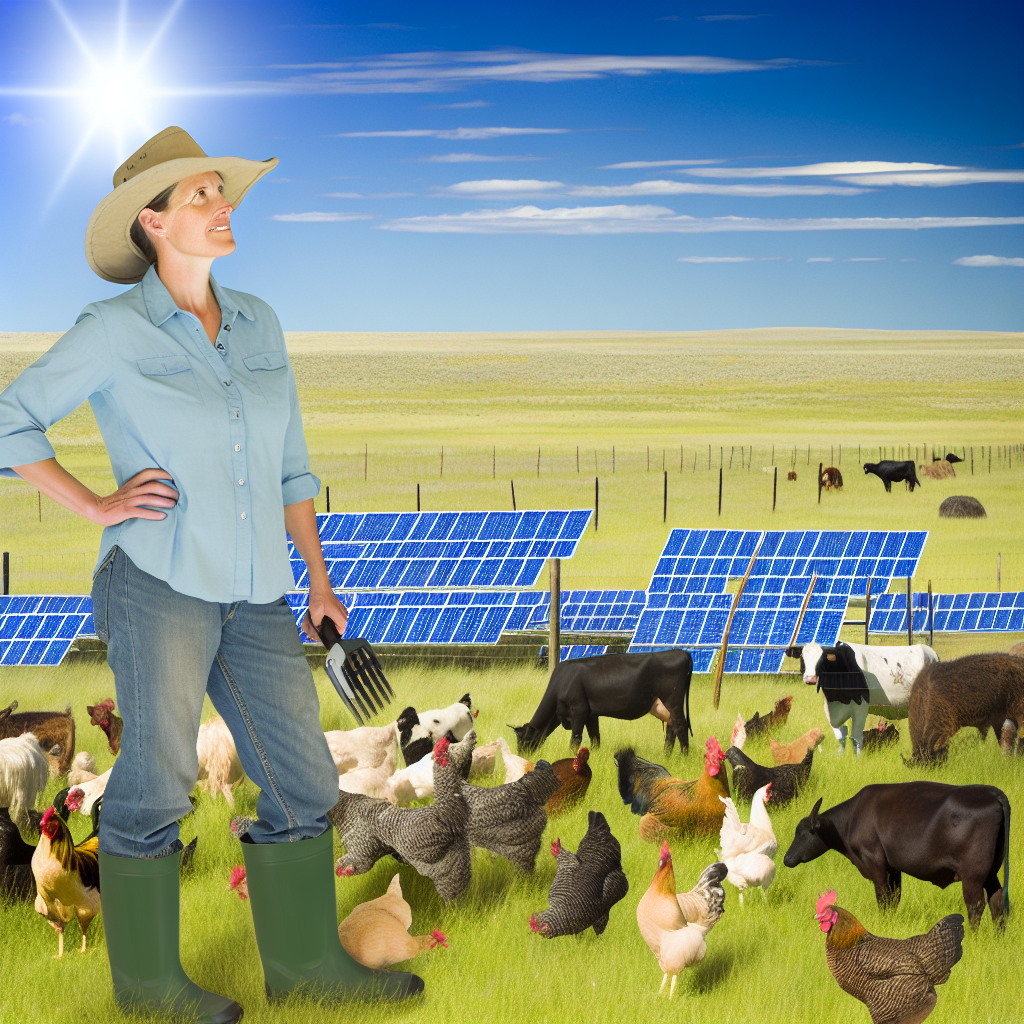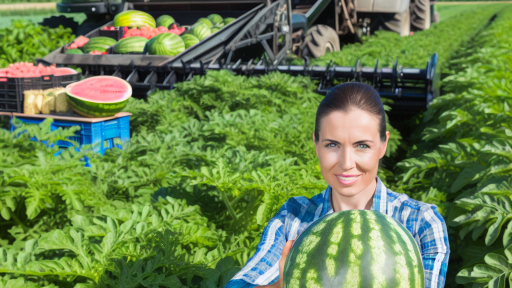Understanding the Principles of Sustainable Livestock Management
Environmental Responsibility
Sustainable livestock management focuses on environmental responsibility.
This approach reduces the ecological footprint of farming practices.
It emphasizes waste management and pollution control.
Farmers can implement practices that enhance soil health and water quality.
Animal Welfare
Prioritizing animal welfare is crucial in sustainable livestock management.
This principle ensures that animals live in healthy and stress-free environments.
Providing adequate space, nutrition, and healthcare is essential for their well-being.
Economic Viability
Economic viability supports the sustainability of livestock operations.
Farmers must balance profitability with environmental and social concerns.
Investing in efficient feed and health care can reduce costs and increase yields.
Community Involvement
Engaging with the community enhances sustainable livestock practices.
Farmers should collaborate with local organizations and support local economies.
Education and outreach programs can promote sustainable practices among neighbors.
Resource Management
Effective resource management is vital for sustainability.
This involves managing land, water, and feed resources efficiently.
Transform Your Agribusiness
Unlock your farm's potential with expert advice tailored to your needs. Get actionable steps that drive real results.
Get StartedPractices like rotational grazing can improve pasture health and productivity.
Adaptation to Climate Change
Adapting to climate change is increasingly important for livestock management.
Farmers should adopt strategies to mitigate risks associated with climate variability.
Implementing drought-resistant feed crops can enhance resilience.
Additionally, monitoring weather patterns helps in making informed decisions.
The Benefits of Rotational Grazing for Pasture Health
Promoting Pasture Regeneration
Rotational grazing allows pastures to rest and regenerate.
This method prevents overgrazing and enhances grass recovery.
In turn, healthy grasses support soil health and biodiversity.
The improvement in soil structure retains more moisture.
Consequently, pastures become more resilient to drought conditions.
Enhancing Nutritional Quality
Rotational grazing increases the nutritional value of forage.
Livestock benefit from the variety of grasses and legumes.
This variety improves the overall health of animals.
Additionally, it enhances the quality of meat and dairy products.
Reducing Soil Erosion
Effective grazing management helps reduce soil erosion.
The roots of grasses stabilize the soil structure.
Moreover, healthy pastures absorb more rainfall, reducing runoff.
This process minimizes nutrient loss and sedimentation in water bodies.
Healthy soils contribute to a sustainable farming ecosystem.
Cost-Effectiveness and Profitability
Rotational grazing can lower feed costs for livestock producers.
By maximizing forage utilization, farmers can reduce reliance on additional feeds.
This method often leads to higher profits by enhancing livestock performance.
Furthermore, reduced need for chemical fertilizers leads to savings.
Improving Grazing Management Practices
Implementing rotational grazing requires careful planning.
Showcase Your Farming Business
Publish your professional farming services profile on our blog for a one-time fee of $200 and reach a dedicated audience of farmers and agribusiness owners.
Publish Your ProfileFarmers should monitor pasture conditions regularly.
This ensures livestock graze in optimal areas at the right time.
Regular movement minimizes parasite infestations among animals.
Effective record-keeping enhances decision-making for future management.
Selecting the Right Breeds for Sustainable Production
Understanding Breed Selection
Selecting the right livestock breeds is crucial for sustainable production.
Breeds can influence productivity, efficiency, and environmental impact.
Moreover, each species has unique characteristics that suit different conditions.
Evaluate Local Conditions
First, assess the local climate and environment.
Choose breeds that thrive in your specific region.
This approach minimizes stress and enhances animal welfare.
Consider Production Goals
Identify your specific production goals when selecting breeds.
For example, aim for milk production, meat quality, or wool yield.
Your objectives will guide you toward the most suitable breeds.
Focus on Genetic Diversity
Prioritize genetic diversity within your herd or flock.
Diverse genetics contribute to overall resilience and productivity.
Additionally, this practice helps prevent disease outbreaks.
Seek Disease Resistance and Adaptability
Look for breeds with proven disease resistance.
Adaptable breeds can withstand varying challenges in different environments.
These traits are essential for sustainable livestock management.
Use Resources Wisely
Leverage local agricultural extension services for breed recommendations.
Consult with seasoned farmers in your area for their insights.
Utilizing these resources can improve your breed selection process.
Impact of Breed on Sustainability
Each breed’s efficiency can significantly affect resource use.
Efficient breeds often require less feed, water, and land.
Consequently, they contribute to reduced environmental impacts.
Explore Further: Soil Health Management for Small-Scale Farmers
Integrating Livestock with Crop Production for Improved Efficiency
The Benefits of Integration
Integrating livestock with crop production enhances overall efficiency.
It optimizes resource use, such as land, water, and nutrients.
This integration helps in reducing waste and improving soil health.
Moreover, it enhances biodiversity on farms.
Natural Fertilization
Livestock manure provides an excellent source of organic fertilizer.
Farmers can utilize this manure to enrich soil fertility.
This reduces the need for chemical fertilizers significantly.
Consequently, crops benefit from enhanced growth due to improved soil quality.
Pest Control Strategies
Integrating livestock can aid in natural pest control.
Chickens, for instance, consume ticks and other pests.
This reduces the reliance on chemical pesticides.
Healthy animals also contribute to a balanced ecosystem on the farm.
Efficient Crop Rotation
Crop rotation with livestock can enhance soil structure.
Diverse root systems from various crops prevent soil erosion.
Showcase Your Farming Business
Publish your professional farming services profile on our blog for a one-time fee of $200 and reach a dedicated audience of farmers and agribusiness owners.
Publish Your ProfileAdditionally, rotating animals and crops can break pest cycles.
Such practices ultimately lead to better yields and healthier crops.
Enhanced Resource Management
Utilizing both livestock and crops allows for better resource management.
Farmers can use cover crops for livestock feed during lean seasons.
This practice ensures that all farm resources are utilized effectively.
Moreover, it improves farm resilience against climate variability.
Community Engagement
Engaging the community can amplify the benefits of integration.
Farmers can collaborate to share resources and best practices.
Local markets thrive when integrated farms supply diverse products.
This collaboration fosters sustainable development in rural areas.
Find Out More: Promoting Ethical Farming In Communities
Managing Water Resources
Significance of Water Conservation
Water conservation is vital for sustainable livestock operations.
It reduces costs and minimizes environmental impact.
Moreover, efficient water use ensures animal health and productivity.
Assessing Water Resources
Start by evaluating the current availability of water resources.
This assessment helps identify gaps and areas for improvement.
Use tools like soil moisture sensors to gather accurate data.
Implementing Water-Saving Techniques
Implementing rainwater harvesting systems proves effective for conserving water.
This technique helps collect and utilize rainfall for livestock needs.
Additionally, consider installing drip irrigation systems for pastures.
These systems deliver water directly to the roots, reducing waste.
Managing Water Quality
Maintaining high water quality is essential for livestock health.
Regularly test water sources for contaminants and pollutants.
Implementing filtration systems can enhance water quality significantly.
Utilizing Technology
Leverage technology to monitor water usage effectively.
Smart irrigation systems adjust watering based on weather conditions.
Furthermore, use data analytics to track water consumption trends.
Educating and Training Staff
Training staff on water management practices is crucial.
Provide sessions on efficient water use and conservation techniques.
Encourage staff to report water waste promptly.
Community Engagement
Engage with local communities to promote water conservation initiatives.
Share knowledge and resources to support sustainable practices.
Collaborating can lead to larger-scale impact and awareness.
Reviewing and Adapting Practices
Regularly review water management practices to ensure effectiveness.
Adapt strategies based on changing conditions and new technologies.
Continuous improvement fosters sustainability in livestock operations.
Learn More: Sustainable Soil Management Practices

Implementing Natural Pest Control Methods in Livestock Farming
Understanding Natural Pest Control
Natural pest control utilizes the ecosystem to manage pests effectively.
This method emphasizes the use of biological agents.
It reduces the need for synthetic chemicals in livestock management.
Showcase Your Farming Business
Publish your professional farming services profile on our blog for a one-time fee of $200 and reach a dedicated audience of farmers and agribusiness owners.
Publish Your ProfileBenefits of Natural Pest Control
Natural pest control enhances biodiversity on the farm.
It supports healthier livestock by minimizing chemical exposure.
Moreover, it can lead to lower operational costs over time.
Encouraging Beneficial Insects
Planting flowers attracts beneficial insects to your farm.
Ladybugs and lacewings can help manage aphid populations.
This practice fosters a natural balance in the ecosystem.
Utilizing Predatory Animals
Introducing predatory birds can control rodent populations.
Additionally, certain breeds of dogs can deter larger pests.
These animals can be an effective part of your pest management strategy.
Implementing Cultural Practices
Cultural practices can also reduce pest problems.
Rotating pastures helps disrupt pest life cycles.
This practice promotes healthier soils and less pest infestation.
Maintaining Cleanliness
Regular manure management helps deter pests.
Keeping feed areas clean reduces food sources for pests.
This simple practice benefits overall livestock health.
Planting Companion Crops
Companion planting creates habitats for pest predators.
For instance, planting mint can repel harmful insects.
This approach supports a more integrated pest management strategy.
Monitoring and Evaluation
Regular monitoring is essential for effective pest control.
Keep track of pest populations and their natural enemies.
This information helps in making informed decisions.
Using Traps and Pheromones
Utilizing traps can provide valuable insights into pest populations.
Pheromone traps can attract and capture specific pests.
This method is both efficient and environmentally friendly.
Recording Observations
Maintain records of pest sightings and treatments used.
Evaluating this data can enhance future pest management efforts.
Continuous learning leads to improved practices over time.
Delve into the Subject: Starting Your Own Community Supported Agriculture
Utilizing Technology and Data for Sustainable Livestock Management Practices
The Role of Technology
Technology plays a crucial role in modern livestock management.
It enhances efficiency and reduces waste significantly.
Farmers now use drones to monitor large expanses of land.
Such technology identifies herd health and pasture conditions.
Moreover, sensors provide real-time data on environmental factors.
Implementing Data Analytics
Data analytics allows farmers to make informed decisions.
Analyzing livestock health data helps improve breeding practices.
Additionally, it assists in tracking feed efficiency among animals.
Farmers can optimize resource allocation based on data insights.
This leads to sustainable practices and reduced costs.
Smart Farming Solutions
Smart farming solutions integrate IoT devices in livestock systems.
These devices remotely monitor animal behavior and health.
Showcase Your Farming Business
Publish your professional farming services profile on our blog for a one-time fee of $200 and reach a dedicated audience of farmers and agribusiness owners.
Publish Your ProfileFarmers receive alerts when animals show signs of distress.
Consequently, timely interventions improve animal welfare.
This method also promotes a healthier livestock population.
Impact of Artificial Intelligence
Artificial intelligence revolutionizes livestock management practices.
AI algorithms analyze various data sources to predict outcomes.
This technology enhances breeding decisions and disease prevention.
Ultimately, it increases productivity while minimizing environmental impacts.
Farmers benefit from improved genetic selection and lower mortality rates.
Benefits of Sustainable Practices
Adopting technology leads to numerous benefits for farmers.
Sustainable livestock management decreases reliance on chemicals.
It reduces greenhouse gas emissions associated with livestock farming.
Additionally, this approach promotes biodiversity in farming systems.
Farmers can achieve higher yields without depleting resources.
Community Engagement and Education in Promoting Sustainable Livestock Practices
The Role of Community Engagement
Community engagement plays a vital role in sustainable livestock management.
It fosters collaboration among farmers, local organizations, and educational institutions.
Furthermore, community initiatives can enhance awareness of sustainable practices.
Developing Educational Programs
Implementing educational programs encourages the adoption of sustainable practices.
Workshops and seminars can provide valuable information to livestock producers.
Moreover, hands-on training improves understanding of eco-friendly techniques.
Forming Partnerships
Forming partnerships with local universities strengthens educational efforts.
These partnerships can facilitate research and develop best practices.
They also provide opportunities for funding and resource sharing.
Creating Awareness Campaigns
Awareness campaigns can dramatically impact public perceptions of livestock management.
These campaigns should highlight the benefits of sustainable practices.
Utilizing social media platforms can broaden the reach of these campaigns.
Engaging Local Farmers
Engaging local farmers in discussions about sustainable practices is crucial.
Peer-to-peer learning can motivate farmers to adopt new methods.
Local success stories can inspire others in the community.
Involving Schools in Education
Involving schools in sustainability education lays a strong foundation.
Students can learn about eco-friendly farming practices early on.
Field trips to local farms can help students connect theory with practice.
Utilizing Resource Materials
Providing educational materials can support community learning efforts.
Brochures, websites, and videos can effectively convey important information.
Additionally, these resources can address common misconceptions about livestock management.
Measuring Impact and Success
Measuring the impact of educational initiatives is essential for improvement.
Surveys and feedback from participants can provide insights into effectiveness.
Regular evaluation ensures programs meet the community’s changing needs.
Additional Resources
Organic Agriculture – USDA ERS
Sustainable Agriculture vs. Industrial Agriculture – FoodPrint




